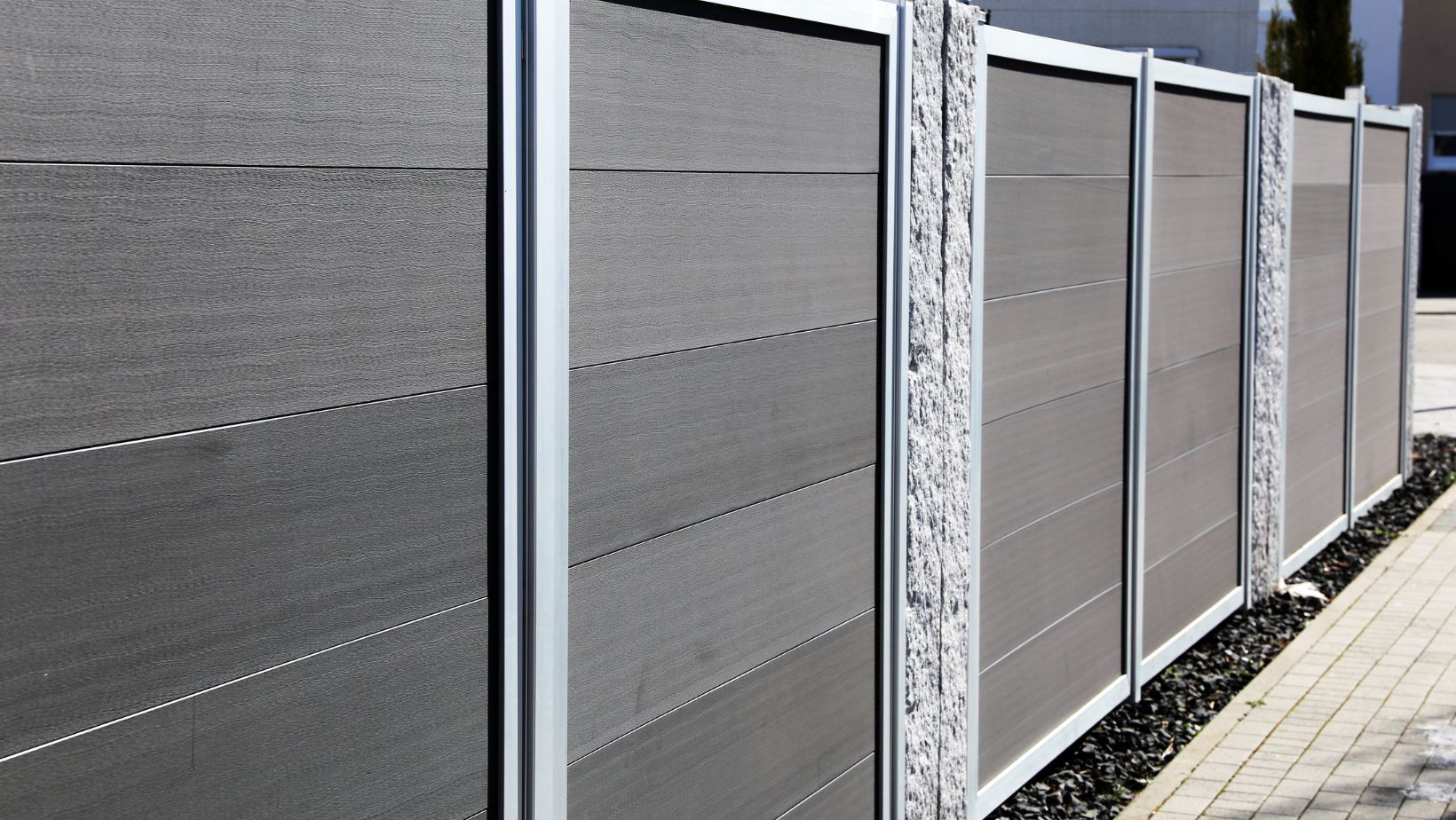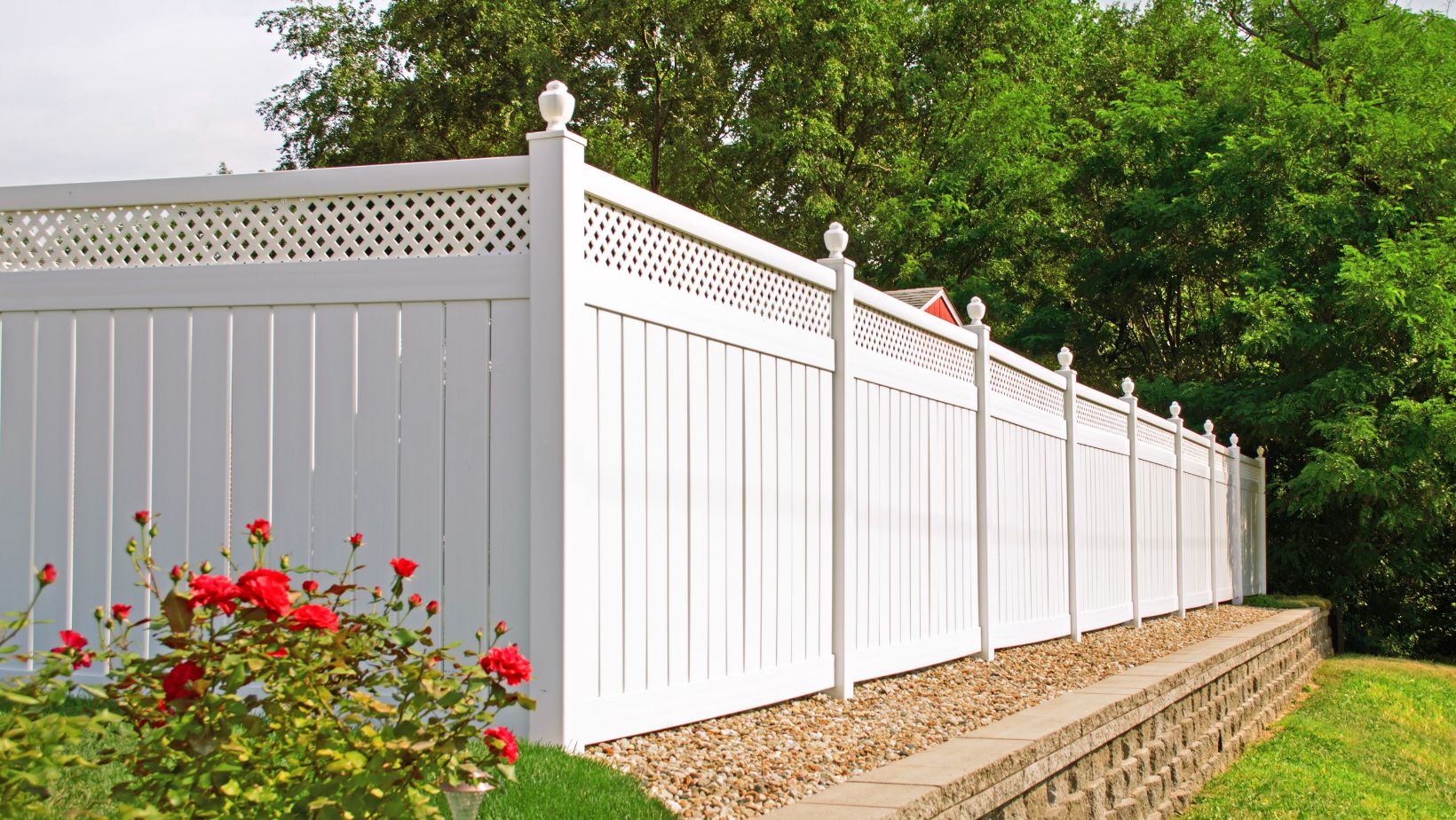
Choosing the right fence for your property is a significant decision that goes beyond mere aesthetics. Your choice between vinyl and wood fences can impact your home’s appearance, maintenance needs, and budget for years to come. In this article, we’ll delve into the key factors to consider whether to choose a vinyl vs wood fence, helping you make an informed decision that suits your lifestyle and preferences.
Understanding Vinyl Fences
Vinyl fences are constructed from PVC (polyvinyl chloride), a synthetic material known for its durability and low maintenance characteristics. This type of fencing has gained popularity due to its ability to withstand weathering, resist rot, and remain unaffected by pests like termites. Vinyl fences are typically manufactured as panels that are assembled seamlessly, offering a clean and modern look for residential properties.
Advantages of Vinyl Fences
Vinyl fences boast several advantages that make them a preferred choice for many homeowners. Their foremost appeal lies in their durability; vinyl doesn’t rot, warp, or splinter like wood, making it a long-lasting option. Maintenance requirements are minimal—regular cleaning with soap and water is usually sufficient to keep the fence looking pristine. Furthermore, vinyl fences come in a variety of styles and colors, allowing homeowners to find a design that complements their home’s architecture and landscaping.
Disadvantages of Vinyl Fences
Despite their numerous benefits, vinyl fences do have some drawbacks to consider. The initial cost of installing a vinyl fence tends to be higher than that of wood fences, which can be a deterrent for budget-conscious homeowners. Additionally, while vinyl is highly durable, repairs can be more challenging and often require replacing entire sections rather than fixing individual components. Color options may also be limited compared to the natural aesthetics of wood.
Exploring Wood Fences
Wood fences offer a natural, classic look that enhances the appeal of residential properties. Various types of wood can be used for fencing, each with its own characteristics in terms of durability, appearance, and resistance to weathering and pests.
Perfect Woods for Fences
The popular opinion is the best wood for fences is cedar, followed by redwood, and pressure-treated pine. Cedar is prized for its natural oils that resist decay and repel insects, making it an excellent choice for humid or damp climates.

Redwood, with its rich color and natural beauty, is also highly durable and resistant to insects. Pressure-treated pine is a cost-effective option that has been chemically treated to resist rot, insects, and moisture, making it suitable for areas with harsh weather conditions.
Comparing Vinyl and Wood Fences
When comparing vinyl and wood fences, cost is a significant factor to weigh. Vinyl fences generally have a higher initial cost due to the expense of materials and installation. However, they often prove more economical in the long run due to minimal maintenance requirements. Wood fences, while initially cheaper to install, may require more frequent upkeep, such as staining or painting, as well as repairs to address issues like rot or insect damage.
Maintenance Requirements
Vinyl fences are celebrated for their low maintenance needs. Beyond periodic cleaning to remove dirt and debris, vinyl fences require little attention to maintain their appearance and functionality. Wood fences, on the other hand, demand more upkeep to preserve their beauty and structural integrity. Regular staining or painting helps protect the wood from moisture and UV exposure, while inspections for signs of rot or insect infestation are crucial for addressing potential issues early.
Aesthetics and Customization
Both vinyl and wood fences offer distinct aesthetic advantages. Vinyl fences come in a variety of styles and colors, ranging from sleek modern designs to more traditional options that mimic the look of wood. However, some homeowners may prefer the natural warmth and texture of wood, which can be stained or painted to match personal preferences and blend seamlessly with the surrounding landscape.
Environmental Considerations
When considering the environmental impact of fencing materials, wood, and vinyl present different considerations. Vinyl is a synthetic material derived from non-renewable resources, and its manufacturing process involves chemical treatments that can have environmental implications. Wood, when sourced from sustainably managed forests, is a renewable resource that can be biodegradable at the end of its lifespan.
Eco-Friendliness
Vinyl fencing’s environmental footprint primarily stems from its manufacturing process and disposal considerations. While durable and long-lasting, vinyl does not decompose naturally and can release toxins if incinerated.

Wood, by contrast, is biodegradable and can be recycled or repurposed after use, provided it hasn’t been treated with harmful chemicals.
Choosing the Right Fence for You
When choosing between vinyl and wood fences, it’s essential to assess your specific needs and preferences. Consider factors such as the desired level of privacy, architectural style, and budget constraints. Vinyl fences offer seamless panels that provide excellent privacy, while wood fences can be customized with different heights and designs to suit aesthetic preferences.
Local Considerations
Local climate and regulations should also influence your decision. Vinyl fences are well-suited to climates with high humidity or salt air, as they resist moisture and corrosion. In areas prone to strong winds or heavy precipitation, wood fences may require more frequent maintenance to withstand weathering. Additionally, check with local zoning laws and homeowners’ association guidelines regarding fence height, style, and placement before making a final decision.
Finding a Reliable Fence Company
Choosing a reputable fencing company is crucial to ensuring quality installation and long-term satisfaction with your fence. Begin by researching local companies through online reviews, recommendations from neighbors, and industry associations. Look for companies with a proven track record of delivering high-quality fencing solutions and excellent customer service.
Conclusion
Choosing between vinyl and wood fences involves weighing various factors such as cost, maintenance requirements, aesthetics, and environmental considerations. Both materials offer unique benefits, and the right choice depends on your specific priorities and circumstances. By considering the insights provided in this article and consulting with a Joliet fence company, you can make an informed decision that enhances your property’s beauty, privacy, and durability for years to come.





